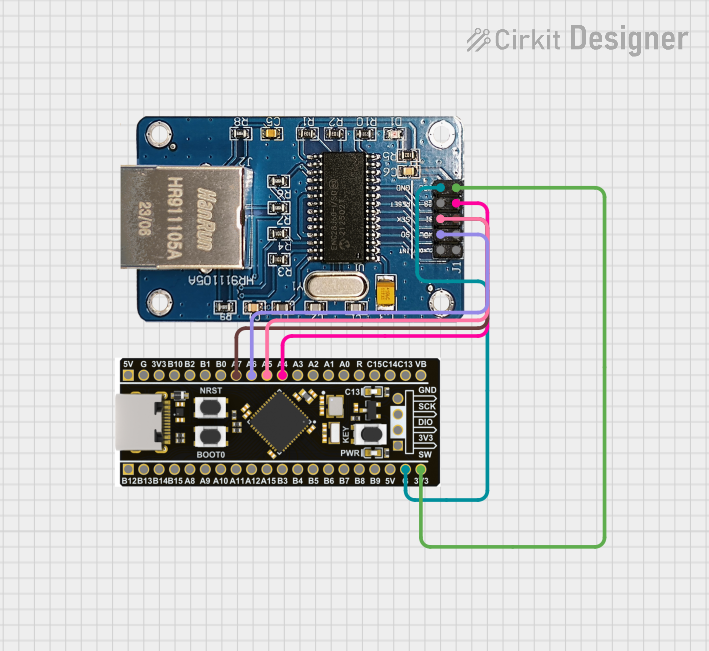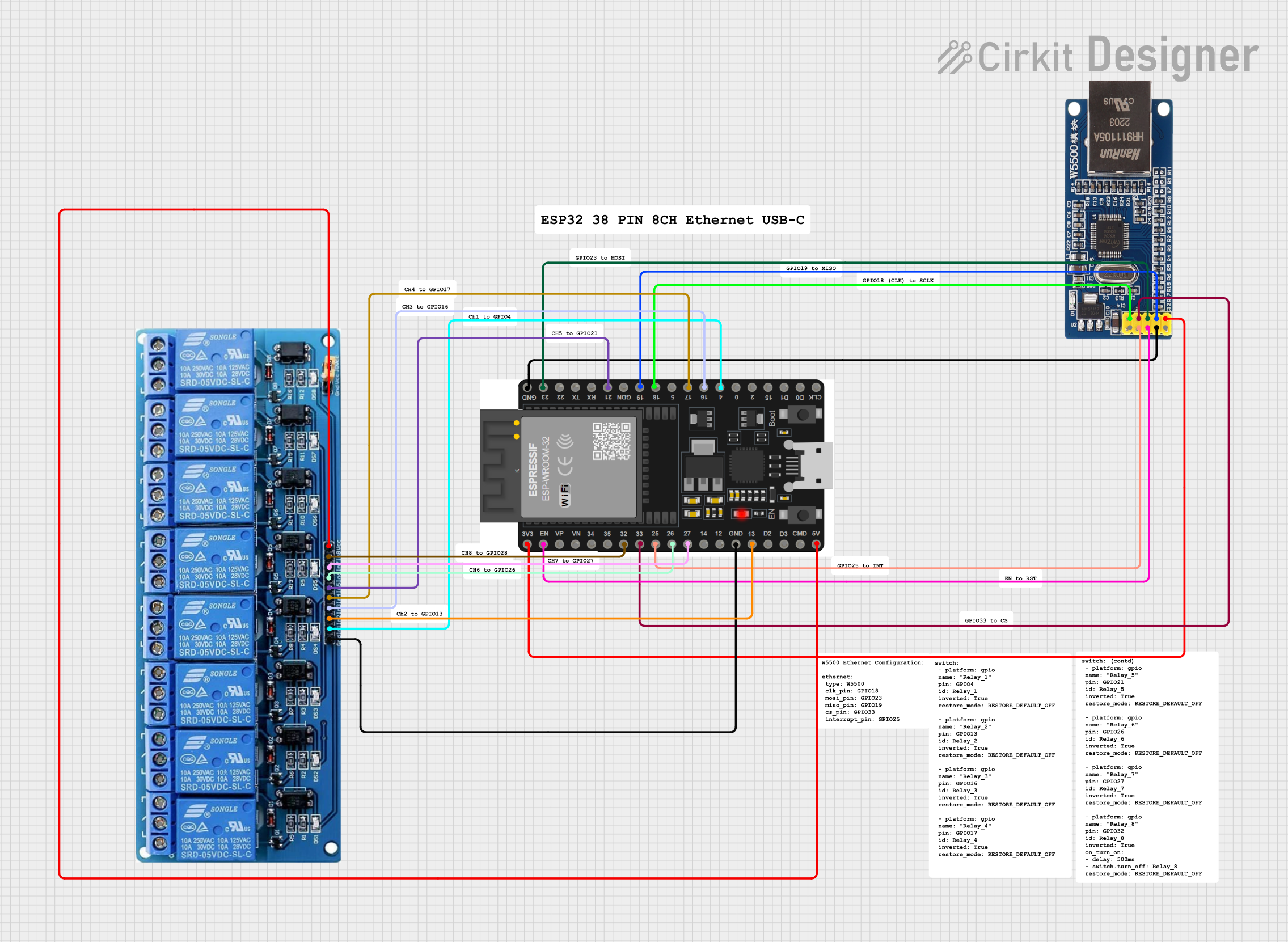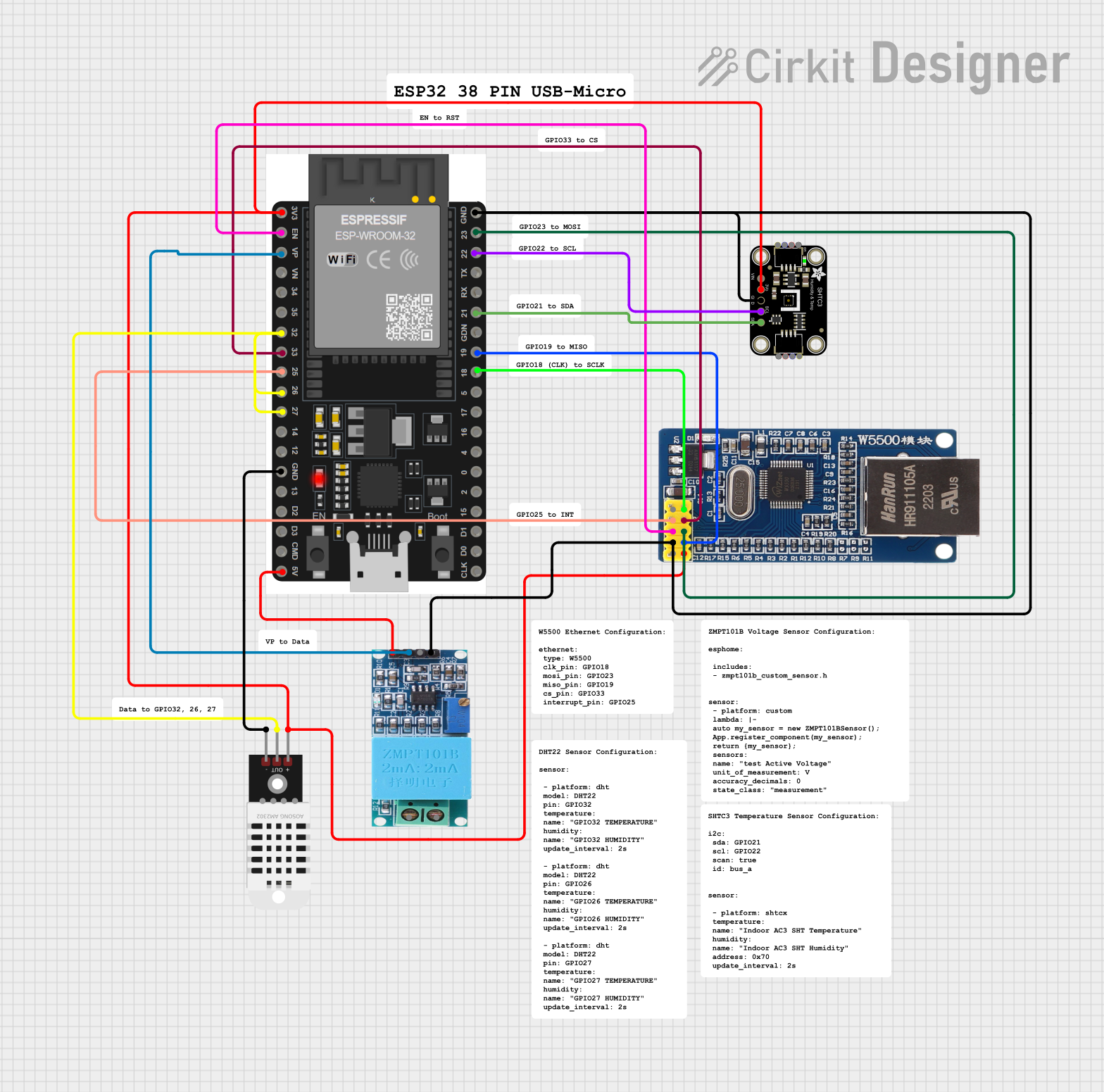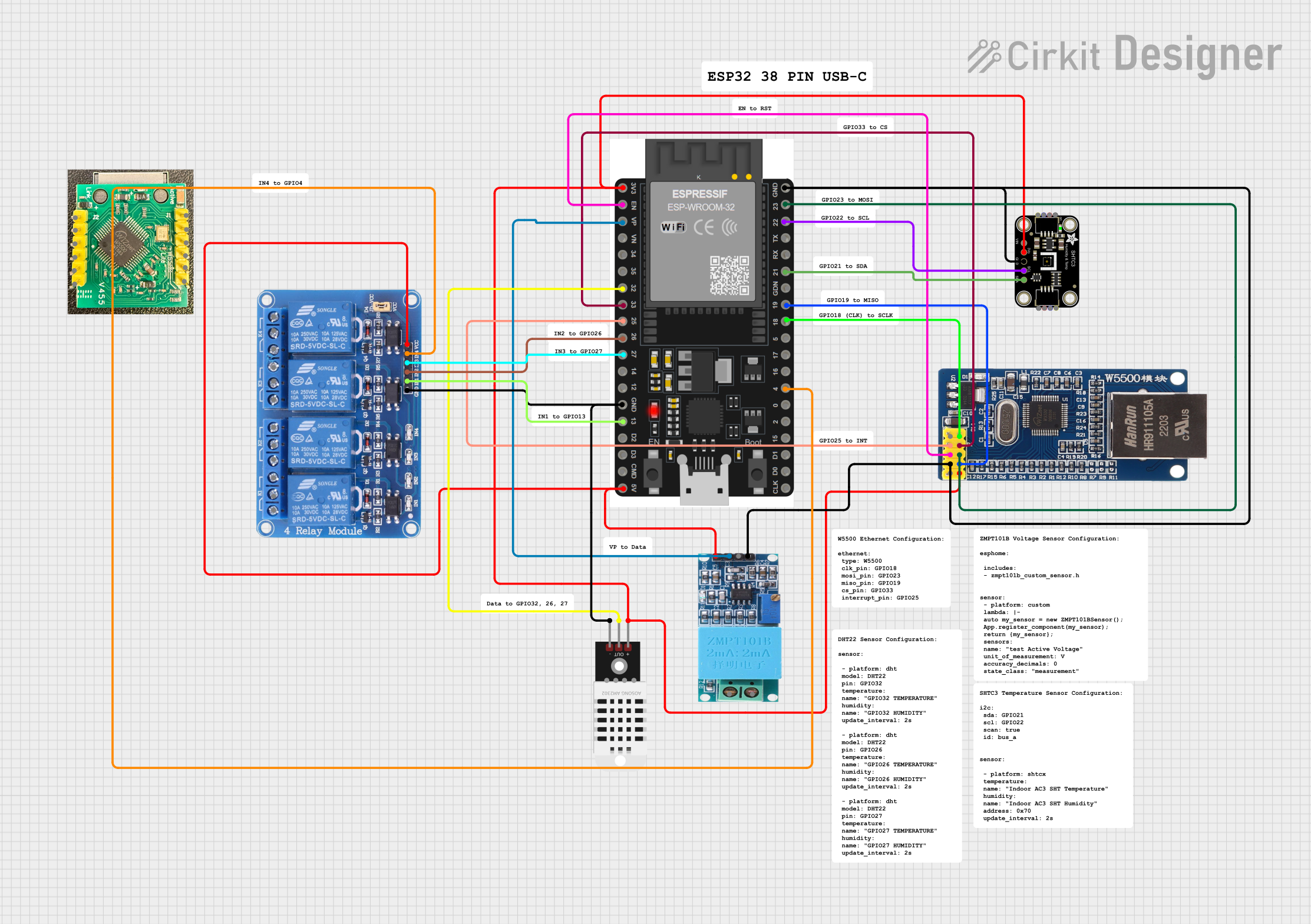
How to Use ENC28J60 Ethernet Module: Examples, Pinouts, and Specs
 Design with ENC28J60 Ethernet Module in Cirkit Designer
Design with ENC28J60 Ethernet Module in Cirkit DesignerIntroduction
The ENC28J60 Ethernet Module is a versatile network communication module that allows microcontrollers to connect to an Ethernet network. It is based on the ENC28J60, a standalone Ethernet controller with an industry-standard Serial Peripheral Interface (SPI). This module is commonly used in embedded systems for network communication, enabling devices to access the Internet or communicate on a local network. It is particularly popular in the DIY and hobbyist community for its ease of use with platforms like Arduino.
Explore Projects Built with ENC28J60 Ethernet Module

 Open Project in Cirkit Designer
Open Project in Cirkit Designer
 Open Project in Cirkit Designer
Open Project in Cirkit Designer
 Open Project in Cirkit Designer
Open Project in Cirkit Designer
 Open Project in Cirkit Designer
Open Project in Cirkit DesignerExplore Projects Built with ENC28J60 Ethernet Module

 Open Project in Cirkit Designer
Open Project in Cirkit Designer
 Open Project in Cirkit Designer
Open Project in Cirkit Designer
 Open Project in Cirkit Designer
Open Project in Cirkit Designer
 Open Project in Cirkit Designer
Open Project in Cirkit DesignerCommon Applications and Use Cases
- Internet of Things (IoT) devices
- Home automation systems
- Networked sensors and data logging
- Remote device control and monitoring
Technical Specifications
Key Technical Details
- Voltage Supply: 3.3V
- Current Consumption: 180 mA (typical)
- Operating Temperature Range: -40°C to +85°C
- Communication Interface: SPI
- Speed: 10 Mbps (Ethernet)
- Buffer Size: 8 KB
Pin Configuration and Descriptions
| Pin Number | Pin Name | Description |
|---|---|---|
| 1 | VCC | 3.3V power supply input |
| 2 | GND | Ground |
| 3 | INT | Interrupt output (active low) |
| 4 | WOL | Wake on LAN input (active low) |
| 5 | SCK | SPI clock input |
| 6 | SI | SPI data input |
| 7 | SO | SPI data output |
| 8 | CS | SPI chip select (active low) |
| 9 | RESET | Reset input (active low) |
Usage Instructions
How to Use the Component in a Circuit
- Power Supply: Connect the VCC pin to a 3.3V source and the GND pin to the ground.
- SPI Interface: Connect the SCK, SI, SO, and CS pins to the corresponding SPI pins on your microcontroller.
- Reset: Connect the RESET pin to a digital pin on your microcontroller for software reset capability.
- Interrupts: (Optional) Connect the INT pin to an interrupt-capable pin on your microcontroller if you wish to use interrupt-driven communication.
- Wake on LAN: (Optional) Connect the WOL pin if you require the Wake on LAN feature.
Important Considerations and Best Practices
- Ensure that the power supply is 3.3V, as higher voltages can damage the module.
- Use a level shifter if your microcontroller operates at 5V logic levels.
- Keep the SPI clock speed within the limits specified by the ENC28J60 datasheet.
- Use a proper decoupling capacitor close to the VCC and GND pins to minimize power supply noise.
- For stable operation, consider using a dedicated SPI bus for the module to avoid conflicts with other SPI devices.
Example Code for Arduino UNO
#include <SPI.h>
#include <Ethernet.h>
// MAC address for the Ethernet shield
byte mac[] = { 0xDE, 0xAD, 0xBE, 0xEF, 0xFE, 0xED };
// Initialize the Ethernet client library
EthernetClient client;
void setup() {
// Start the Ethernet connection
Ethernet.begin(mac);
}
void loop() {
// Code to handle Ethernet communication
}
Code Comments
- The
Ethernet.hlibrary is used to interface with the ENC28J60 module. - The
macarray holds the MAC address for the Ethernet module. - The
EthernetClientobject is used for network communication. Ethernet.begin(mac)initializes the Ethernet module with the specified MAC address.
Troubleshooting and FAQs
Common Issues
- No Network Connection: Ensure that the wiring is correct and the module is properly powered.
- SPI Communication Failure: Check the SPI connections and ensure that the correct pins are used.
- Module Not Responding: Perform a hardware reset or check the power supply.
Solutions and Tips for Troubleshooting
- Verify that the ENC28J60 module is not overheating.
- Check for soldering issues on the module pins.
- Ensure that the Ethernet cable is properly connected and functioning.
- Use network diagnostic tools to check for connectivity issues.
FAQs
Q: Can the ENC28J60 module be used with a 5V microcontroller? A: Yes, but a level shifter is required for the SPI lines to ensure proper logic level conversion.
Q: Is it possible to use multiple ENC28J60 modules with one microcontroller? A: Yes, you can use multiple modules by assigning different chip select (CS) pins for each module.
Q: How do I assign a static IP address to the ENC28J60 module?
A: You can assign a static IP using the Ethernet.begin(mac, ip) function, where ip is the desired static IP address.
Q: What library should I use for the ENC28J60 with an Arduino? A: The standard Ethernet library may not support the ENC28J60. Use a compatible library like UIPEthernet or EtherCard for Arduino.